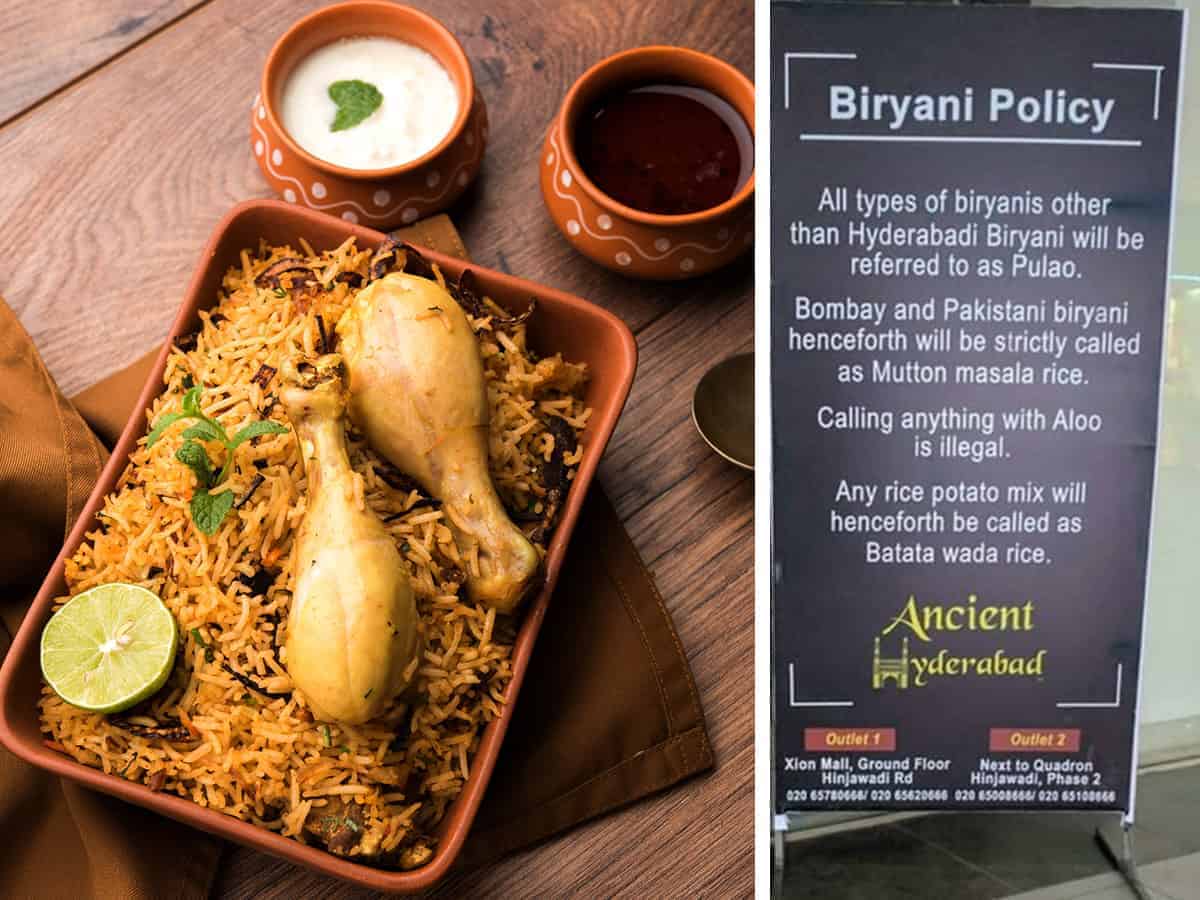Sruthi
Biryani, apart from being a sumptuous royal dish for centuries, also has been the subject of many serious debates. For, people constantly tussle about the ‘best biryani’ that exists. Biryani has had a long journey from Persia, to Mughal bawarchi khana to various parts of the Indian subcontinent. However, in each stop, it assumed a different style of cooking.
Recently, a Pune-based restaurant’s ‘Biryani Policy’ sparked banter between the people of different regions claiming the rice-based dish’s ownership and authenticity.
A photo of the banner placed outside the restaurant went viral on social media. The Biryani Policy states “All types of Biryani other than Hyderabadi Biryani will be referred to as Pulao.” While everyone stakes their claims on which Biryani is better and authentic, the debate rages on.
The banner further adds, “Bombay and Pakistani henceforth will be strictly called as Mutton Masala Rice.” In a jibe at Kolkata Biryani, deeming anything with Aloo is illegal. Any rice potato mix will henceforth be referred to as Batata wada rice.” This irked the proponents of the respective biryanis who justified and backed the specialty of their own.
To go a little back into history and trace the origins of Biryani, two tales seem to be popular. One, it is believed that the term Biryani has come from the Farsi word ‘Birian’ which means fried before cooking. This could be true if we go by some Biryani preparations where the rice is first fried and then mixed with the other ingredients. The second one is that the name of the dish comes from the word ‘Birinj’, which means rice in Farsi. It is also commonly agreed that biryani dates back to the 15th century when the Mughals invaded India and brought it with them from Persia.
Fans of different other variants — Lucknowi, Chettinad, Thalassery —chimed in as well.
Over 50 varieties of the dish exist in the country today, with everyone claiming their version to be superior. But truth be told, every version is the best version in itself. Or is it?

